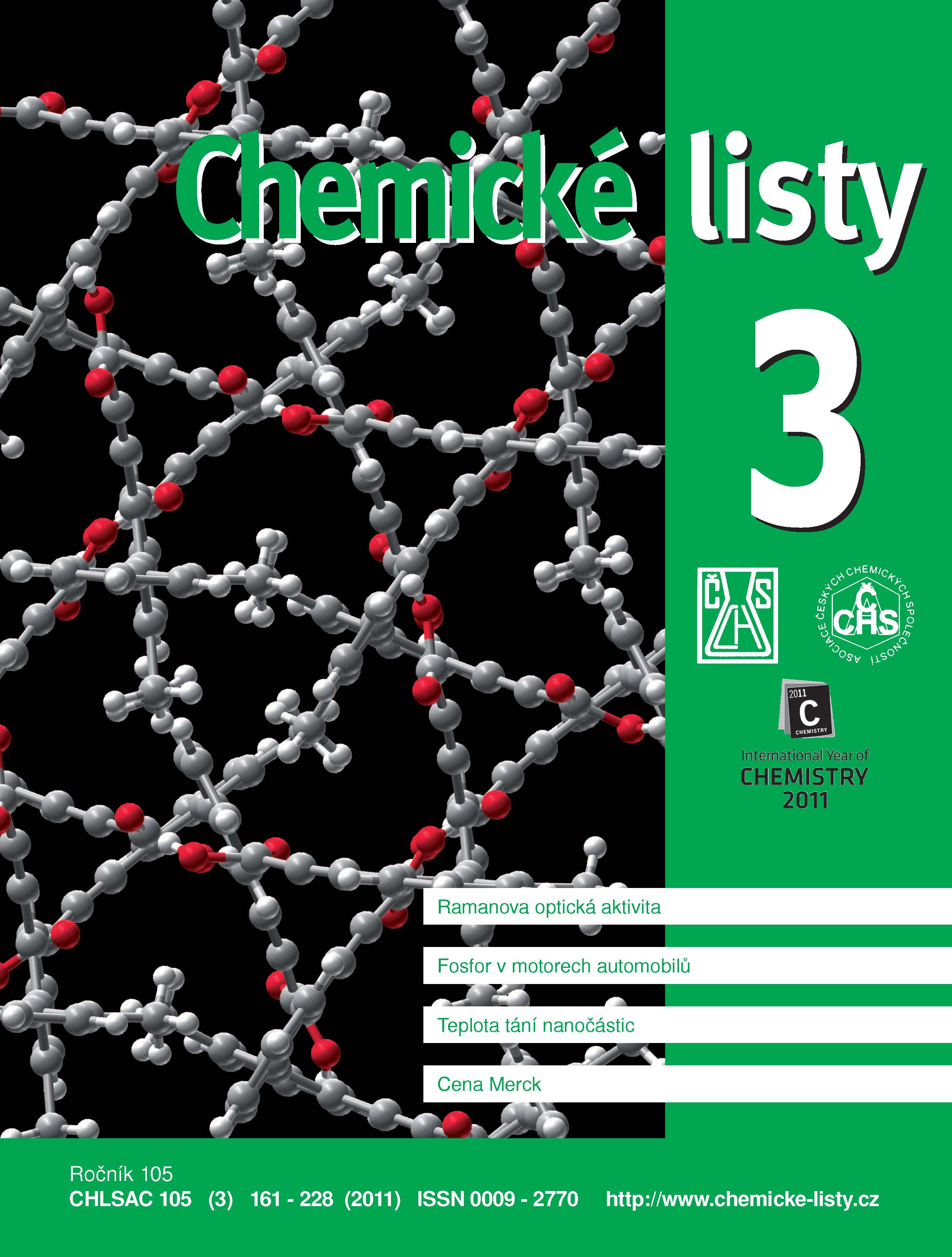Teplota tání nanočástic
Klíčová slova:
nanočástice, teplota tání, kohezní energie, tepelné vibrace atomů, rovnováha solid-liquidAbstrakt
Nanomaterials, which in the last two decades penetrated into almost all fields of human activity (new engineering materials, electronics, optoelectronics, communication and information technologies, catalysis, energy conversion and energetics, pharmaceuticals, biomaterials, medicine, ecology), have been the focus of scientific interest for more than hundred years. These materials usually show the physical properties that are quantitatively and qualitatively different from their bulk counterparts. The melting temperature, which is considered a function of size and shape of particles, ranks among essential physico-chemical characteristics of solids. Some methods commonly used for determination of the melting point of nanoparticles are briefly described. Various theoretical concepts are introduced (cohesive energy and its relationship to melting temperature, the Lindemann melting theory, solid-liquid phase equilibria) on the basis of which relations between the melting temperature and spherical particle size can be derived. The results of predictions for nanoparticles are compared with experimental data.





